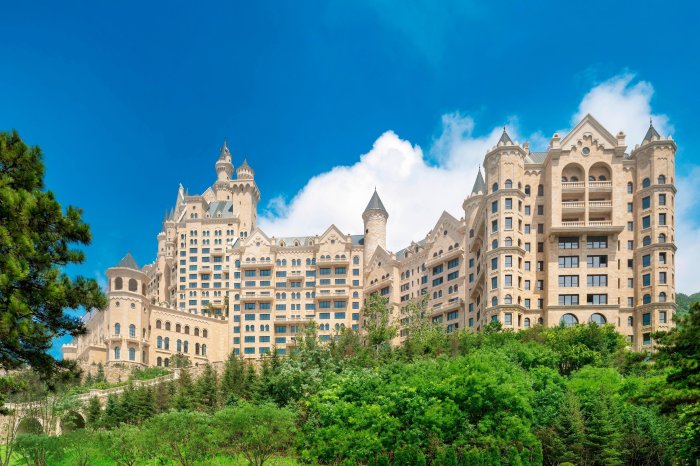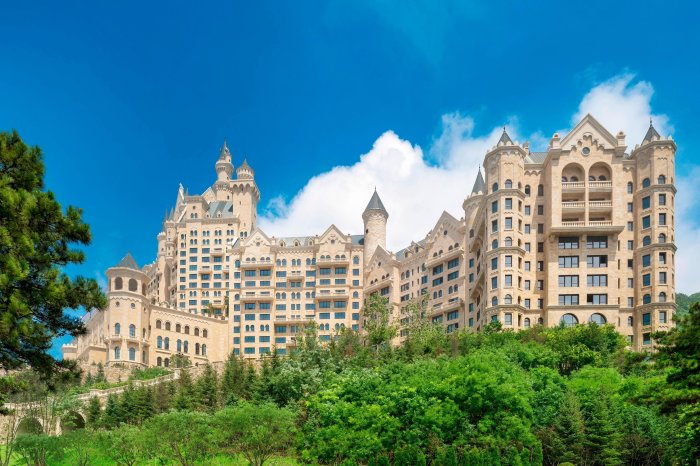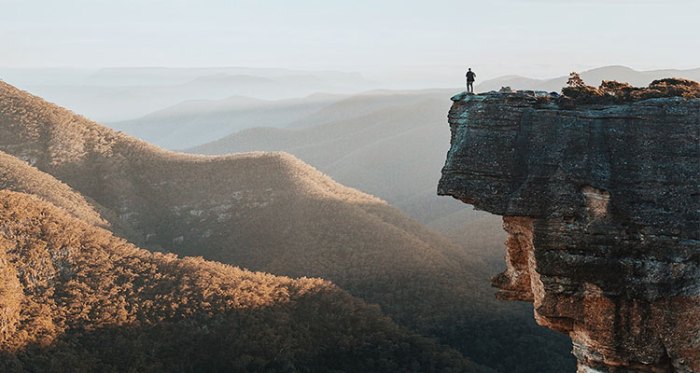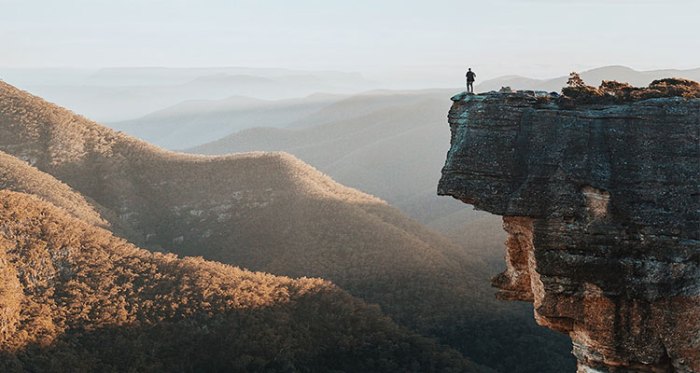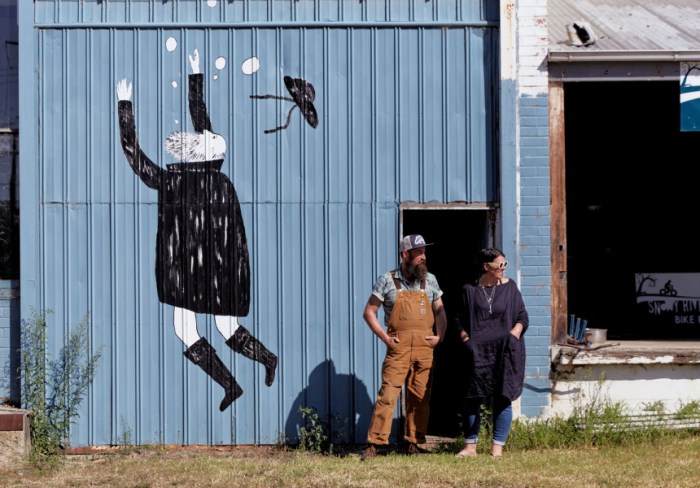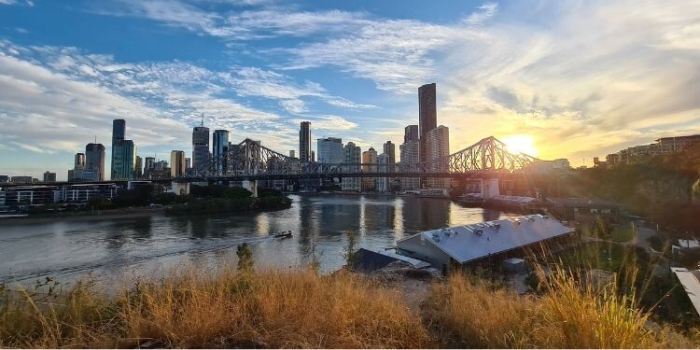Stay overnight Uluru Kata Tjuta National Park Australia is your gateway to an unforgettable Australian adventure. This park, steeped in Aboriginal culture and breathtaking landscapes, offers diverse accommodation options to suit every traveler. From the iconic Uluru to the impressive Kata Tjuta, your overnight stay will be filled with awe-inspiring sights and experiences. We’ll explore the best times to visit, necessary permits, essential gear, and the myriad of activities awaiting you.
Discover the perfect blend of cultural immersion, natural wonders, and thrilling activities within this vast national park. This comprehensive guide will walk you through planning your overnight trip, from booking accommodation to respecting the local culture. Prepare to be captivated!
Introduction to Uluru-Kata Tjuta National Park
Uluru-Kata Tjuta National Park, a UNESCO World Heritage site in central Australia, is a breathtaking landscape of immense cultural and natural significance. Known for its iconic Uluru (Ayers Rock) and Kata Tjuta (The Olgas), the park encompasses a vast expanse of diverse ecosystems, reflecting the rich history and traditions of the Aboriginal people who have lived there for tens of thousands of years.
This unique park is a must-see destination for travelers seeking adventure, spiritual connection, and a deeper understanding of the indigenous culture.The park is not just a collection of rocks; it holds profound cultural meaning for the Anangu people, the traditional owners of the land. Uluru and Kata Tjuta are considered sacred sites, holding ancestral stories, ceremonies, and spiritual connections deeply interwoven with the land.
Respect for these cultural values is paramount when visiting the park.
Accommodation Options
Uluru-Kata Tjuta National Park offers a range of accommodation options to suit various budgets and preferences. From luxurious resorts to more budget-friendly camping grounds, visitors can choose the experience that best aligns with their travel style. These options provide varying levels of comfort and proximity to the iconic landmarks.
- Luxury Resorts: High-end resorts often feature lavish amenities, including swimming pools, spas, and fine dining. These resorts provide a premium experience with a focus on comfort and relaxation. Examples include the Longitude 131° and the Ayers Rock Resort.
- Hotels and Lodges: Mid-range hotels and lodges offer comfortable accommodations, usually with convenient access to amenities like restaurants and shops. These are a good compromise between luxury and affordability.
- Camping Grounds: For a more immersive experience, camping provides an opportunity to connect with nature. Camping grounds usually offer basic facilities, including toilets and showers. This allows for a more budget-friendly and authentic experience. Camping options are popular with budget travelers and nature enthusiasts.
Park Landscapes: Uluru and Kata Tjuta
The park’s landscapes are incredibly diverse, ranging from the iconic monolith of Uluru to the impressive dome-shaped rock formations of Kata Tjuta. Each offers a unique experience and perspective.
Staying overnight in Uluru-Kata Tjuta National Park is a truly unforgettable experience. The vastness of the landscape is breathtaking, and the unique rock formations are mesmerizing. Thinking about the best time to visit, however, you might consider the weather patterns in a similar desert environment like Marrakesh, which influences the best time to visit. Referencing the ideal time to visit Marrakesh best time to visit marrakesh , you’ll find that cooler months provide a more pleasant experience, which also applies to the Uluru region.
Ultimately, an overnight stay is a must-do when visiting the amazing Uluru-Kata Tjuta National Park.
| Location | Description | Image Suggestions |
|---|---|---|
| Uluru | Uluru, also known as Ayers Rock, is a massive sandstone rock formation rising dramatically from the surrounding plains. Its vibrant colours, especially at sunrise and sunset, are breathtaking. The rock itself is a significant landmark and a sacred site for the Anangu people. | A photograph showcasing the vastness of Uluru against a vibrant sunset sky. A close-up image of the rock’s surface, highlighting its texture and layers. |
| Kata Tjuta | Kata Tjuta, also known as The Olgas, is a cluster of massive rock domes, each with its own unique character. The sheer scale and intricate formations are awe-inspiring. The area offers incredible hiking trails, providing a variety of perspectives of the rock formations. | A panoramic view of the entire Kata Tjuta range, emphasizing the scale and grandeur. A photograph of a hiker on one of the many trails within the area, showcasing the beauty of the landscape. |
Planning an Overnight Stay

Embarking on an overnight adventure in Uluru-Kata Tjuta National Park requires careful planning. The sheer scale and beauty of the landscape demand respect for the environment and a well-considered approach to your stay. Understanding the booking process, optimal seasons, necessary permits, and packing essentials will ensure a memorable and safe experience.This section details the crucial steps in securing your overnight stay, helping you navigate the park’s unique requirements and maximize your enjoyment.
From choosing the right time of year to selecting the perfect accommodation, we’ll equip you with the knowledge to plan your unforgettable Uluru adventure.
Booking Accommodation
Securing accommodation in Uluru-Kata Tjuta National Park involves a few key steps. First, familiarize yourself with the available options, as the range varies significantly in style, amenities, and price. Online booking platforms are generally the most convenient method, offering a clear overview of available dates and spaces. Remember to check for any specific requirements or restrictions related to your chosen accommodation.
Best Time to Visit
The ideal time to visit Uluru-Kata Tjuta National Park for optimal weather conditions is generally during the dry season, which runs from April to October. This period offers the clearest skies, making the iconic rock formations stand out in all their glory. Temperatures are also more manageable during this time, minimizing discomfort and maximizing your exploration.
Necessary Permits or Approvals
Overnight stays in Uluru-Kata Tjuta National Park require appropriate permits, especially if you’re camping or planning a self-contained trip. These permits ensure responsible tourism and contribute to the preservation of this precious natural environment. Detailed information about required permits can be found on the official park website. Ensure you understand the specific regulations before your trip to avoid any potential issues.
Essential Items for an Overnight Trip
Packing appropriately for your overnight trip is crucial. This includes items for comfort, safety, and a respectful approach to the environment.
Staying overnight in Uluru-Kata Tjuta National Park in Australia is an unforgettable experience. The sheer scale of the rock formations is breathtaking, and you’ll feel a profound connection to the land. If you’re looking for similar stunning natural beauty, check out some of the top parks in Andalucia, Spain, for nature lovers, like andalucia top parks nature lovers.
The red rock landscapes there are quite captivating and certainly worth exploring. Ultimately, though, Uluru-Kata Tjuta still holds a special place in my heart for its unique beauty and spiritual significance.
- Appropriate clothing for varying temperatures, including layers for warmth and cool evenings. Consider weather conditions, even during the dry season.
- Comfortable walking shoes or hiking boots, as you’ll likely be doing a fair amount of exploring.
- Sunscreen, a hat, and sunglasses are essential for protection from the strong sun.
- Water bottles or hydration packs to stay hydrated, particularly during outdoor activities.
- A first-aid kit containing essential medications and supplies.
- A portable charger and sufficient power banks for your devices, ensuring you stay connected.
- A small backpack for carrying essentials during day trips.
Accommodation Options
The park offers a variety of accommodation options to suit different budgets and preferences. This table summarizes the key features:
| Accommodation Type | Pricing (estimated) | Amenities | Booking Link (Example) |
|---|---|---|---|
| Park Campground | $30-$60 AUD per night (per tent) | Basic amenities like toilets, showers, and picnic tables | Book through the park’s official website |
| Hotels/Resorts within the park | $150-$500+ AUD per night | Range from basic to luxury, including pools, restaurants, and other facilities | Check major online travel agencies |
| Private Cabins/Chalets | $200-$800+ AUD per night | Self-contained units with kitchens, bathrooms, and comfortable spaces | Search on dedicated accommodation platforms |
Note that prices are estimates and can vary based on availability and time of year. Booking well in advance is highly recommended.
Activities and Experiences
Uluru-Kata Tjuta National Park offers a plethora of activities for visitors, catering to diverse interests and experience levels. From awe-inspiring hikes to immersive cultural experiences, the park ensures a memorable journey. This section details the various options available for a one-day overnight stay, including tours, trails, and park regulations.A one-day overnight stay allows a deeper exploration of the park, enabling you to witness the sunrise and sunset over Uluru and Kata Tjuta, experiences that are unique and unforgettable.
This offers a balance between experiencing the key attractions and enjoying a comfortable stay.
Sample Itinerary for a One-Day Overnight Stay
This itinerary provides a framework for a one-day overnight stay, balancing key activities with relaxation. It can be adapted to suit your interests and energy levels.
- Afternoon: Arrival and check-in at your chosen accommodation. Settle in, unpack, and prepare for the evening. Consider a light meal at the accommodation or a nearby restaurant.
- Evening: Witness the breathtaking sunset over Uluru. Many tour operators offer sunset viewing opportunities, or you can find a secluded spot to enjoy the spectacle independently. Afterwards, enjoy dinner at a restaurant or your accommodation. Consider attending a cultural performance for an immersive experience.
- Night: Enjoy the tranquility of the night, possibly with stargazing (Uluru is a Dark Sky location). Your accommodation will provide comfortable facilities for rest.
- Morning: Wake up early to catch the sunrise over Uluru. This is a spectacular experience, offering a different perspective on the iconic rock formation. Enjoy a leisurely breakfast at your accommodation.
- Morning/Late Morning: Engage in a guided tour or independent exploration of Kata Tjuta (The Olgas). Select a hike based on your fitness level. Depending on the tour, you can have lunch included or bring a packed lunch.
- Afternoon: Depart from the park, taking with you unforgettable memories of your overnight stay.
Available Tours and Activities
Uluru-Kata Tjuta National Park offers a variety of guided tours and self-guided activities. These options range from short walks to multi-day expeditions, catering to various interests and budgets.
- Guided Tours: Numerous tour operators provide guided tours covering various aspects of the park, including sunset views, cultural experiences, and hikes. These tours often include transportation, experienced guides, and access to specific areas within the park.
- Self-Guided Hikes: The park has many self-guided hiking trails of varying difficulty. Choose a trail based on your fitness level and desired experience. Essential gear like water and appropriate footwear are essential.
- Cultural Experiences: Immerse yourself in the Anangu culture with guided tours of local art centres or cultural performances. These opportunities offer insights into the traditional practices and beliefs of the Anangu people.
Park Rules and Regulations
Strict adherence to park rules and regulations is crucial for a safe and respectful visit. These rules ensure the protection of the environment and the cultural heritage of the Anangu people.
- Respect for the environment: Leave no trace. Carry out all rubbish, stay on marked trails, and avoid disturbing the natural environment.
- Respect for the Anangu culture: Engage with the Anangu people with respect and understanding. Respect their customs and traditions, and refrain from taking souvenirs without their permission.
- Compliance with park signage: Adhere to all signage regarding safety, environmental protection, and cultural sensitivity.
Comparison of Tours
A table comparing different tour options, highlighting duration, cost, and key attractions.
| Tour Name | Duration (approx.) | Cost (approx.) | Key Attractions |
|---|---|---|---|
| Sunset Uluru Tour | 2-3 hours | $50-$150 | Sunset views, cultural explanation, comfortable transportation |
| Kata Tjuta Hiking Tour | 4-6 hours | $80-$200 | Hikes, scenic viewpoints, insights into the park’s geological features |
| Cultural Immersion Tour | Half-day | $100-$200 | Art centres, cultural performances, meeting with Anangu people |
Hiking Trails
Uluru-Kata Tjuta offers a range of hiking trails, accommodating varying fitness levels. The trails range from easy walks to challenging climbs, providing opportunities for scenic viewpoints.
- Easy Trails: Perfect for beginners, these trails provide scenic walks with gentle inclines, suitable for families and those seeking a leisurely experience. Examples include the Base Walk around Uluru or some shorter trails around Kata Tjuta.
- Moderate Trails: These trails offer a good balance between challenge and reward. They provide opportunities for stunning views and a more immersive experience. Examples include the Valley of the Winds or the various walks within Kata Tjuta.
- Difficult Trails: These trails require a higher level of fitness and experience. They provide challenging ascents and spectacular panoramic views. Examples include the Uluru Circuit or more challenging trails within Kata Tjuta.
Accommodation Options and Facilities

Uluru-Kata Tjuta National Park offers a range of accommodation options to suit various budgets and preferences, from rustic campsites to luxurious resorts. Choosing the right accommodation is crucial for maximizing your enjoyment of the stunning landscapes and cultural experiences. Understanding the amenities and facilities available at each option will help you make an informed decision.The park’s remote location influences the available facilities, and careful planning is key for a comfortable and memorable stay.
Consider factors like proximity to the attractions, desired level of comfort, and your budget when selecting your accommodation.
Accommodation Types Near the Park
Different options cater to diverse needs and preferences. Hotels and resorts provide modern conveniences, while campsites offer a more immersive experience, connecting you directly with nature. Each option comes with its own set of facilities and services.
- Hotels and Resorts: These offer a range of amenities like swimming pools, restaurants, and spas, catering to those seeking comfort and convenience. They are usually located within a short drive of the park’s entrance, making it easy to access attractions and services. For example, the Longitude 131° offers a unique, luxury experience with stunning views and excellent facilities, while the Ayers Rock Resort caters to a broader range of budgets.
- Campgrounds: Uluru-Kata Tjuta National Park has designated campsites within the park boundary. These offer a more budget-friendly option for those wanting a close-to-nature experience. Facilities vary but typically include toilets, showers, and picnic areas. Camping allows for a deeper immersion in the natural surroundings, offering a unique opportunity to wake up to the sounds of the desert.
Park-Based Facilities for Overnight Visitors
The park itself provides essential facilities for overnight visitors. These facilities ensure a comfortable and safe stay within the park’s boundary.
- Campgrounds: These offer basic but essential facilities like toilets, showers, and picnic areas. Some campsites may have laundry facilities, depending on location. These sites often provide a close-to-nature experience, immersing you in the environment.
- Information Centres: These provide visitor information, maps, and essential details about the park’s activities and regulations. They’re excellent resources for planning your itinerary and ensuring a smooth experience.
- Restaurants: Some campsites and resorts offer on-site dining options, allowing you to enjoy meals without venturing too far from your accommodation.
Comparative Table of Accommodation Options
This table provides a quick overview of different accommodation options, highlighting their key features and approximate costs.
| Accommodation Type | Location | Amenities | Estimated Cost (AUD) |
|---|---|---|---|
| Ayers Rock Resort | Near Uluru | Swimming pools, restaurants, shops, spa, multiple room options | $200-$1000+ per night |
| Longitude 131° | Near Uluru | Luxury rooms, stunning views, dining, spa, exceptional service | $500-$2000+ per night |
| Uluru Campground | Within Uluru-Kata Tjuta National Park | Toilets, showers, picnic areas, limited electricity | $50-$150 per night |
Exceptional Overnight Experiences (Based on Traveller Feedback)
Numerous travellers have described exceptional overnight experiences at Uluru. One common theme is the profound impact of witnessing the sunrise or sunset over Uluru. Another highlights the feeling of being connected to the land and culture, as well as the incredible stargazing opportunities available. A frequently mentioned experience is enjoying the quiet solitude of the desert at night, a powerful reminder of the park’s vastness.
Staying overnight at Uluru-Kata Tjuta National Park in Australia is a truly unforgettable experience. The vast landscapes and incredible rock formations are simply breathtaking. While planning your trip, you might also want to consider some safe and exciting destinations in Mexico, like the ones detailed in this helpful guide on safe places to visit in Mexico now.
Ultimately, choosing to stay overnight at Uluru-Kata Tjuta will be a highlight of any Australian adventure.
Many travelers rave about the unique experiences and cultural immersion. For instance, some have had incredibly memorable encounters with the local Aboriginal people, gaining a deeper understanding of the park’s cultural heritage.
Cultural Sensitivity and Respect
Uluru-Kata Tjuta National Park is a sacred site for Aboriginal Australians, and understanding and respecting their culture is essential for a meaningful and respectful visit. This involves more than just following rules; it’s about acknowledging the deep spiritual and historical significance of the land. A respectful visit honours the custodians of the land and fosters a deeper understanding of their connection to Uluru and Kata Tjuta.Understanding the cultural significance of the park is crucial for visitors to appreciate the profound impact the land has on the Aboriginal people.
This awareness translates into thoughtful actions that honour the traditional owners and their heritage.
Respect for Aboriginal People
Respecting Aboriginal people requires acknowledging their inherent rights to their land and culture. This extends to recognizing their role as the traditional custodians of the area, and their continued connection to the land and its stories. Treating them with the same courtesy and consideration you would extend to any other guest is essential. Avoid making assumptions or imposing your own interpretations on their beliefs and practices.
Protocols for Interaction
When interacting with Aboriginal people, be mindful of their customs and traditions. Approaching conversations with respect and a genuine interest in learning is vital. Listen attentively to their perspectives and avoid interrupting. If unsure about appropriate behaviour, it is always best to ask a member of the park’s staff or a local Aboriginal guide.
Do’s and Don’ts for Visitors, Stay overnight uluru kata tjuta national park australia
- Do: Ask permission before taking photographs of Aboriginal people, particularly if they are engaged in traditional activities. Always be mindful of personal space and boundaries.
- Do: Engage in respectful conversation, showing genuine curiosity and interest in their culture. Ask questions, but be prepared to listen attentively to their responses.
- Do: Research the significance of Uluru and Kata Tjuta to Aboriginal people before your visit. Understanding the cultural context of the area will enhance your appreciation for the site.
- Do: Learn about the local language and acknowledge the traditional owners of the land. Using respectful language and acknowledging their connection to the land fosters a more meaningful interaction.
- Don’t: Touch Uluru or Kata Tjuta. These are sacred sites and should be approached with reverence and respect. Touching the rock is a form of disrespect to the Aboriginal people who hold it in high regard.
- Don’t: Use the names “Ayers Rock” or “Uluru-Kata Tjuta” without understanding their cultural significance. Using the local name shows respect for the traditional owners.
- Don’t: Engage in behaviour that could be considered disrespectful, such as climbing Uluru. Respect the rules and regulations put in place by the park authorities.
- Don’t: Make assumptions about Aboriginal culture. Seek information from reliable sources and respect the cultural sensitivity of the community.
Learning about Aboriginal Culture
Numerous resources offer insights into Aboriginal culture. Visiting local cultural centres, talking to Aboriginal guides, and engaging with Aboriginal communities are all valuable opportunities for learning. Seek out educational resources and documentaries to expand your understanding and avoid perpetuating stereotypes. A genuine interest and willingness to learn will lead to a deeper appreciation of the rich cultural heritage of the area.
Key Cultural Guidelines for Visitors
| Category | Action | Explanation |
|---|---|---|
| Respect | Acknowledge the traditional owners | Demonstrate respect by acknowledging the Aboriginal people as the traditional owners of the land. |
| Interaction | Ask permission before taking photos | Obtain permission from Aboriginal people before taking photographs, particularly during cultural activities. |
| Language | Use appropriate names | Use the local name for Uluru and Kata Tjuta. Avoid using the names ‘Ayers Rock’ or ‘Uluru-Kata Tjuta’ unless specifically asked. |
| Behaviour | Follow park regulations | Adhere to all park regulations and guidelines, ensuring your actions are respectful of the environment and cultural values. |
| Learning | Engage with local guides | Seek information from Aboriginal guides or cultural centres for a deeper understanding of the culture. |
Practical Considerations for Overnight Stays: Stay Overnight Uluru Kata Tjuta National Park Australia
Uluru-Kata Tjuta National Park offers a truly unforgettable experience, but planning ahead is key to a smooth and enjoyable stay. This section delves into the practicalities of overnight visits, from transportation and dining to safety and environmental responsibility. Knowing these aspects in advance can help you make the most of your time in this remarkable landscape.
Transportation Options
Reaching Uluru-Kata Tjuta National Park involves several options, each with its own advantages and disadvantages. Air travel provides the fastest connection, with flights to Uluru Airport (ULL) readily available. Alternatively, road travel from Alice Springs is a popular choice, offering scenic views of the surrounding Australian outback. Hiring a car for the drive provides flexibility, but it’s important to be prepared for the conditions, especially the distances involved.
Public transport options, like buses, are also available, but they may require more planning and potentially more travel time.
Local Restaurants and Dining Options
The park and surrounding areas offer a range of dining experiences to suit various tastes and budgets. Numerous restaurants and cafes are located near the park’s entrance, catering to the needs of tourists and locals. These establishments often serve traditional Australian cuisine, alongside international options. Some restaurants are situated within the park itself, providing convenient meal options during your stay.
Consider pre-booking if you’re traveling during peak season to secure your spot.
Emergency Procedures and Safety Precautions
Uluru-Kata Tjuta National Park is a stunning but potentially challenging environment. Familiarizing yourself with emergency procedures is crucial for a safe visit. The park has emergency services readily available, but knowing how to access them in case of an emergency is essential. Staying hydrated and being mindful of the extreme temperatures is vital. Always inform someone of your itinerary, and carry essential first-aid supplies.
Be aware of the park’s guidelines on safe hiking practices, especially during hot conditions.
Waste Management and Environmental Sustainability
The park prioritizes environmental sustainability. Visitors play a vital role in preserving this unique ecosystem. Strict waste management policies are in place, requiring responsible disposal of all waste. Carrying out your trash to designated bins, and avoiding littering, is essential. Additionally, practicing Leave No Trace principles, such as minimizing your impact on the natural surroundings, is crucial.
Understanding the park’s regulations regarding fire safety and water conservation will further contribute to your responsible experience.
Packing for an Overnight Stay
Proper packing ensures comfort and convenience during your overnight stay in the park. Pack appropriate clothing for the diverse weather conditions, including layers to adapt to changing temperatures. Essential items like sunscreen, hats, and sunglasses are crucial to protect against the strong sun. Comfortable walking shoes are a must for exploring the trails. Remember to bring a reusable water bottle to stay hydrated, and any personal medications you may require.
Lastly, consider a small backpack to carry essentials during your day hikes.
Uluru-Kata Tjuta and Surrounding Area
Beyond the iconic Uluru and Kata Tjuta, the surrounding area offers a wealth of experiences. This region boasts a tapestry of natural beauty, ancient cultures, and charming towns, perfect for those seeking an immersive outback adventure. From day trips to extended stays, the possibilities are endless.The area’s significance extends beyond the park’s boundaries, encompassing a rich history and diverse ecosystems.
Understanding the surrounding landscapes and transportation options will enhance your journey.
Nearby Attractions and Towns
The landscape immediately surrounding Uluru-Kata Tjuta National Park is a diverse mix of desert plains, rocky outcrops, and ancient cultural sites. Numerous attractions and small towns provide opportunities for exploring the area beyond the park gates. This allows visitors to experience a wider range of the region’s character and history.
Potential Day Trips and Extended Stays
Day trips from the park can include visits to the Mutitjulu Waterhole, a popular spot for swimming and relaxation. For those seeking longer stays, the nearby town of Alice Springs provides a vibrant hub for further exploration into the Central Australian outback. A deeper understanding of the area’s attractions allows visitors to choose the most suitable options for their interests and time constraints.
Significance of the Surrounding Landscapes
The landscapes surrounding Uluru-Kata Tjuta are integral to the region’s cultural and natural heritage. These areas showcase the diversity of the Australian outback, from the arid plains to the rocky outcrops that characterize the ancient geological formations. This understanding provides context for appreciating the park’s significance.
Transportation Options for Exploring Nearby Areas
Various transportation options are available for exploring the surrounding area. Visitors can rent cars for maximum flexibility, or utilize shuttle services provided by the park and surrounding accommodations. Hiring a car provides freedom to explore at one’s own pace, while shuttle services are convenient for those who prefer a more structured itinerary.
Local Towns and Amenities
| Town | Distance from Uluru-Kata Tjuta National Park (approx.) | Amenities |
|---|---|---|
| Yulara | Within the park | Hotels, restaurants, shops, visitor centers, fuel stations |
| Alice Springs | ~450 km | Larger town with wider range of amenities including shopping, dining, accommodation, and a vibrant cultural scene |
| Kings Canyon | ~270 km | Accommodation, visitor center, scenic views |
| Uluru-Kata Tjuta Cultural Centre | Within the park | Visitor centre, cultural exhibitions, information on Aboriginal history and culture |
These nearby towns offer a range of amenities, from basic necessities to comprehensive services. The table above provides a concise overview of their proximity and the facilities available. This information allows visitors to make informed decisions about their travel plans.
Closing Notes
In conclusion, an overnight stay at Uluru-Kata Tjuta National Park is an experience that transcends the ordinary. It’s a chance to connect with the ancient land, immerse yourself in Aboriginal culture, and create lasting memories amidst stunning natural beauty. From the awe-inspiring rock formations to the diverse accommodation options, your journey promises to be one of a lifetime.
Enjoy the journey!


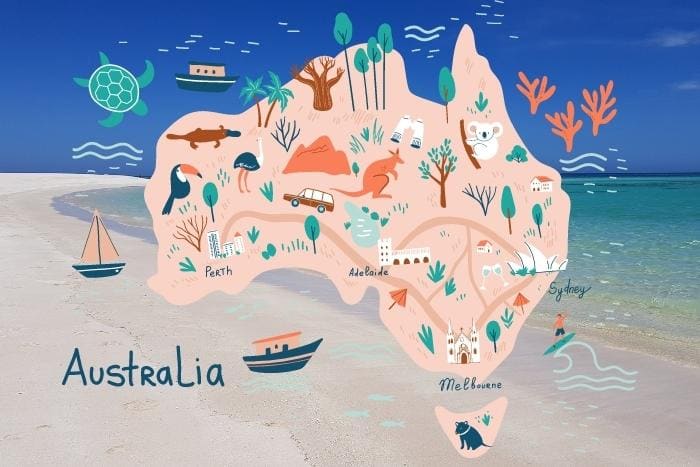






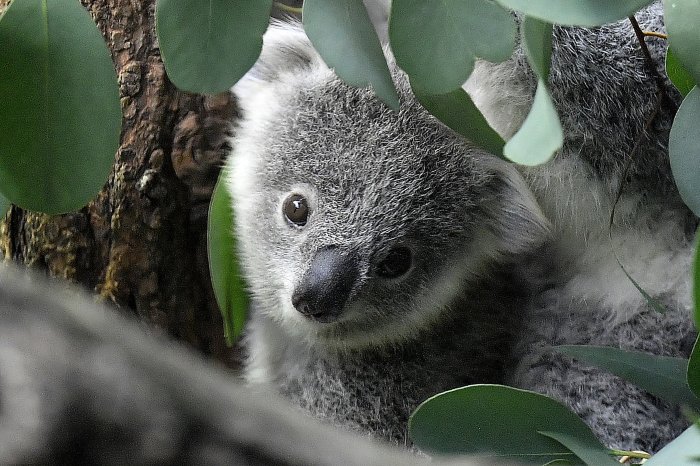
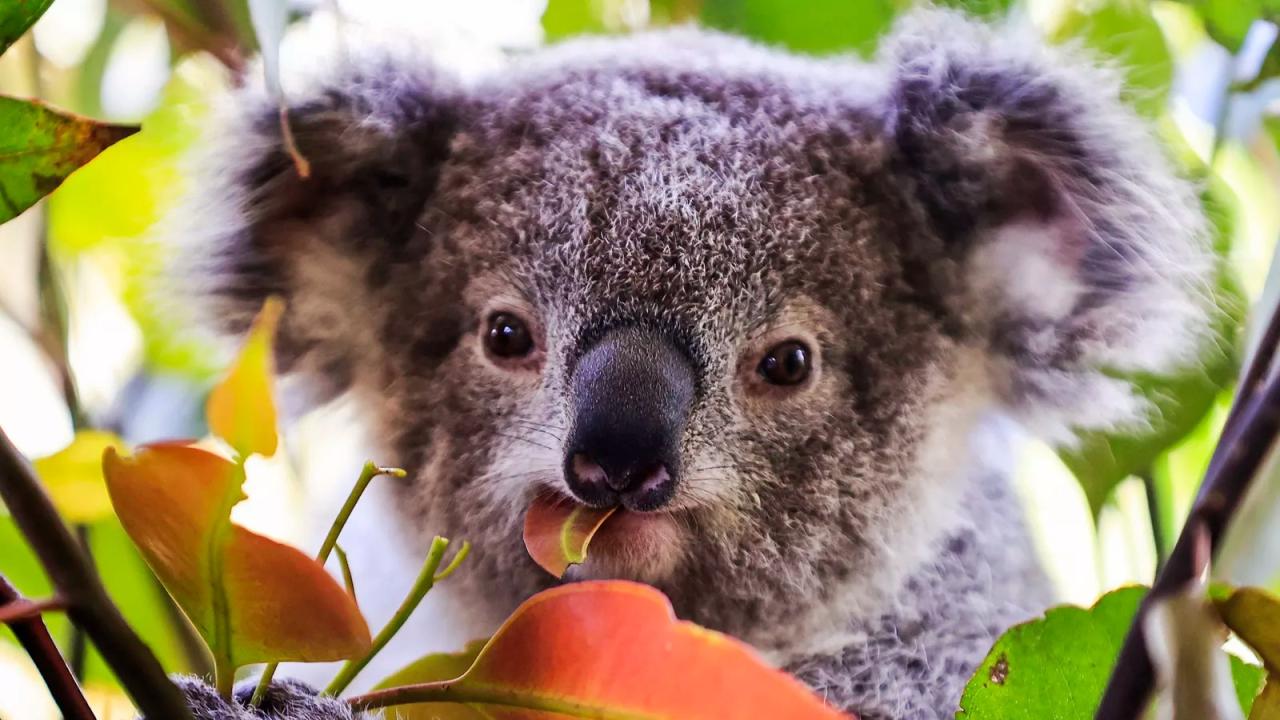
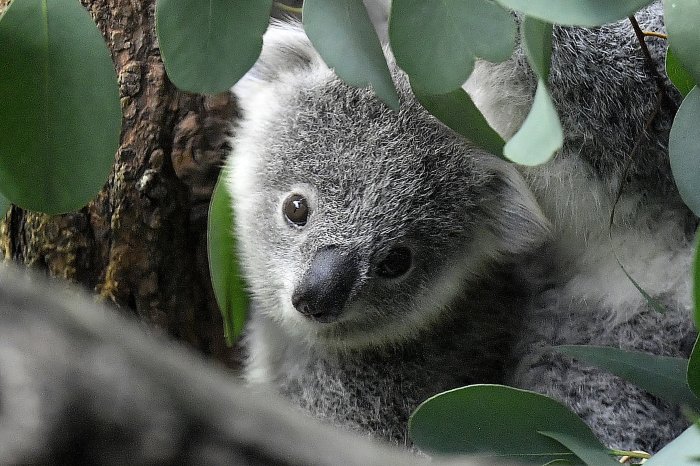
 The koala’s digestive system is uniquely adapted to process eucalyptus leaves. The diagram illustrates the koala’s specialized digestive tract, including a large cecum and a complex microbial community within it. This intricate system allows them to extract nutrients from the tough, fibrous eucalyptus leaves, a process that takes significant time and energy.
The koala’s digestive system is uniquely adapted to process eucalyptus leaves. The diagram illustrates the koala’s specialized digestive tract, including a large cecum and a complex microbial community within it. This intricate system allows them to extract nutrients from the tough, fibrous eucalyptus leaves, a process that takes significant time and energy.


